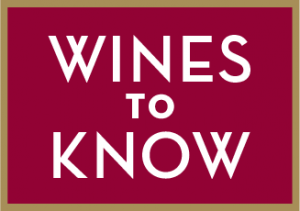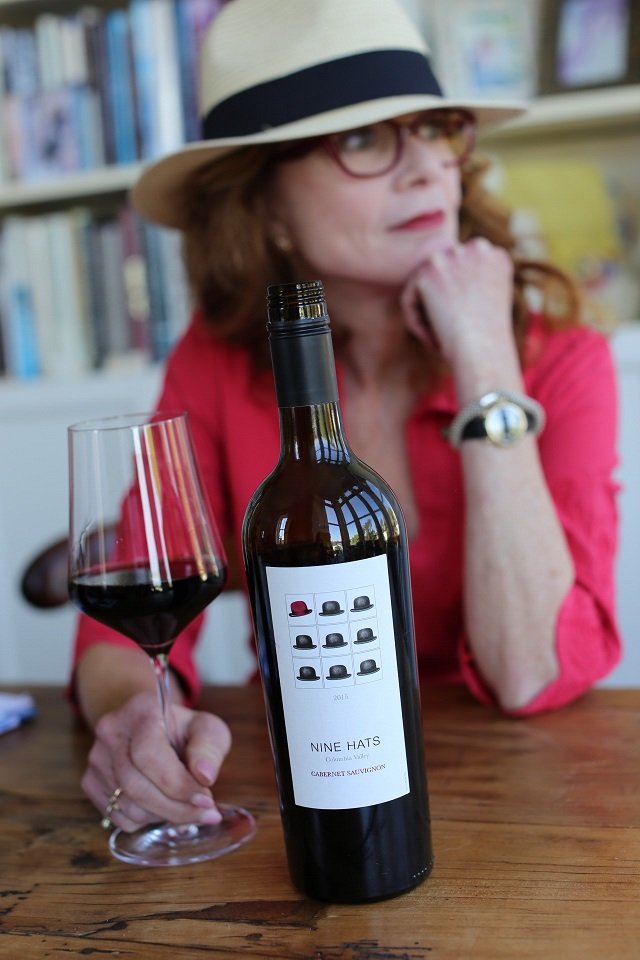
NINE HATS | Cabernet Sauvignon 2015
(Columbia Valley, Washington) $20
 While an expensive cabernet sauvignon might be tasty, it will usually always miss the mark when it comes to structure. And if there’s one thing you want in cabernet, it’s definitely structure. Think of structure as a commanding framework—the flying buttresses supporting a cathedral of fruit. Nine Hats has real cabernet style, dark cassis flavors, and a fine tannic structure. The brand is the invention of Allen Shoup, one of Washington’s most creative wine men. Shoup assembled nine top international winemakers to each make great (expensive) wines with Washington grapes. The cabernet grapes that didn’t make the ultra-top cut went into this baby. So you’re drinking a lot of talent at a fraction of the typical cost. Party season is coming. (14.5% abv)
While an expensive cabernet sauvignon might be tasty, it will usually always miss the mark when it comes to structure. And if there’s one thing you want in cabernet, it’s definitely structure. Think of structure as a commanding framework—the flying buttresses supporting a cathedral of fruit. Nine Hats has real cabernet style, dark cassis flavors, and a fine tannic structure. The brand is the invention of Allen Shoup, one of Washington’s most creative wine men. Shoup assembled nine top international winemakers to each make great (expensive) wines with Washington grapes. The cabernet grapes that didn’t make the ultra-top cut went into this baby. So you’re drinking a lot of talent at a fraction of the typical cost. Party season is coming. (14.5% abv)
88 points KM
Available at Nine Hats Wines

In the traditional system, fine German wine can be made at six levels of ripeness. Which of the following are in the correct order of ascending ripeness from least to most ripe when the grapes are picked?
A. Spätlese, Auslese, Kabinett, Trockenbeerenauslese, Beerenauslese, Eiswein
B. Kabinett, Auslese, Spätlese, Beerenauslese, Trockenbeerenauslese, Eiswein
C. Trockenbeerenauslese, Beerenauslese, Auslese, Spätlese, Kabinett, Eiswein
D. Kabinett, Spätlese, Auslese, Beerenauslese, Eiswein, Trockenbeerenauslese
The Astonishing World of Madeira Wine (and Pumpkin Pie)
Astrophysicists say that the two best states to be in are wrong or confused, because then everything around you becomes exciting and open to discovery.
I was thinking about this gem of an idea the other day while staring at a bottle of Madeira, one of the most exciting wines in the world—and, today, quite open to discovery. Ironically, historically, the wine was once the single most popular wine in the Unites States.

Before I explain how that could be, let me say that next week is the time to reacquaint yourself with Madeira’s exquisite delicious—AND with its ability to be the best thing you’ll ever drink with pumpkin pie. (Recommendations for great Madeiras are at the end of this blog). Continue Reading…

Small production “Grower” Champagnes are big on personality. Many of the best are Terry Theise Selections brought in by Skurnik Imports. After tasting through two dozen, here are the top five I think YOU should experience:
MARC HÉBRART “Cuvée de Réserve” Brut NV $48
If I could only drink one bottle of Champagne this season (not likely), it would be this. Deep seated richness. Spring-loaded with flavor. Exquisite balance. 95 points
R. GEOFFROY “Expression” Brut NV $40
As fresh and light as rarefied mountain air. Plus a texture that’s whipped cream. Expression is a good name for bubbles that are so expressive. 93 points
VARNIER-FANNIÈRE “Grand Cru” Brut NV $57
Earthy, spicy, and rich. Finely etched and deeply resonant flavors. Lots of gravitas. 93 points
PHILIPPE GLAVIER “Emotion” Brut 2012 $110
Like drinking snowflakes, laced with a touch of vanilla. Lacy, fresh, and crisp.
92 points
H. BILLIOT FILS Réserve Brut NV $45
Juicy, minerally, and very vivid. If you love super crisp Champagne, this is it. 92 points

“On one particular occasion, André [Tchelistcheff] and I were visiting Sancerre [in France’s Loire Valley], specifically Didier Dagueneau. But before we arrived at the winery, André told us to stop by the road. He got out and walked over to the vineyard, bent down, grabbed a handful of dirt in his hands, rubbed it and then told me to do the same. Then he said, ‘Smell it because that is what you will smell in the wine.’ And he was right. When we tasted Didier’s ‘Silex,’ I was overwhelmed by the aroma and unique mineral character in the wine.”
—Rob Davis, winemaker at Jordan Winery in Alexander Valley, California, talking about his mentor, the late André Tchelistcheff, who is considered the father of California winemaking

Marsala, the historic sweet fortified wine from Sicily, comes in three colors.
Answer: True. Marsala comes in just three colors—oro (“golden”), ambra (“amber”), and rubino (“ruby”), although rubino is extremely rare. Each type can be made at three levels of sweetness: fairly dry (secco, 4% residual sugar), noticeably sweet (semisecco, 4-10% residual sugar), and very sweet (dolce, over 10% residual sugar). All Marsala is fortified to 17-18% alcohol. Despite numerous cheap supermarket examples, Marsala can be extremely delicious when made by a first-rate producer, like De Bartoli.









